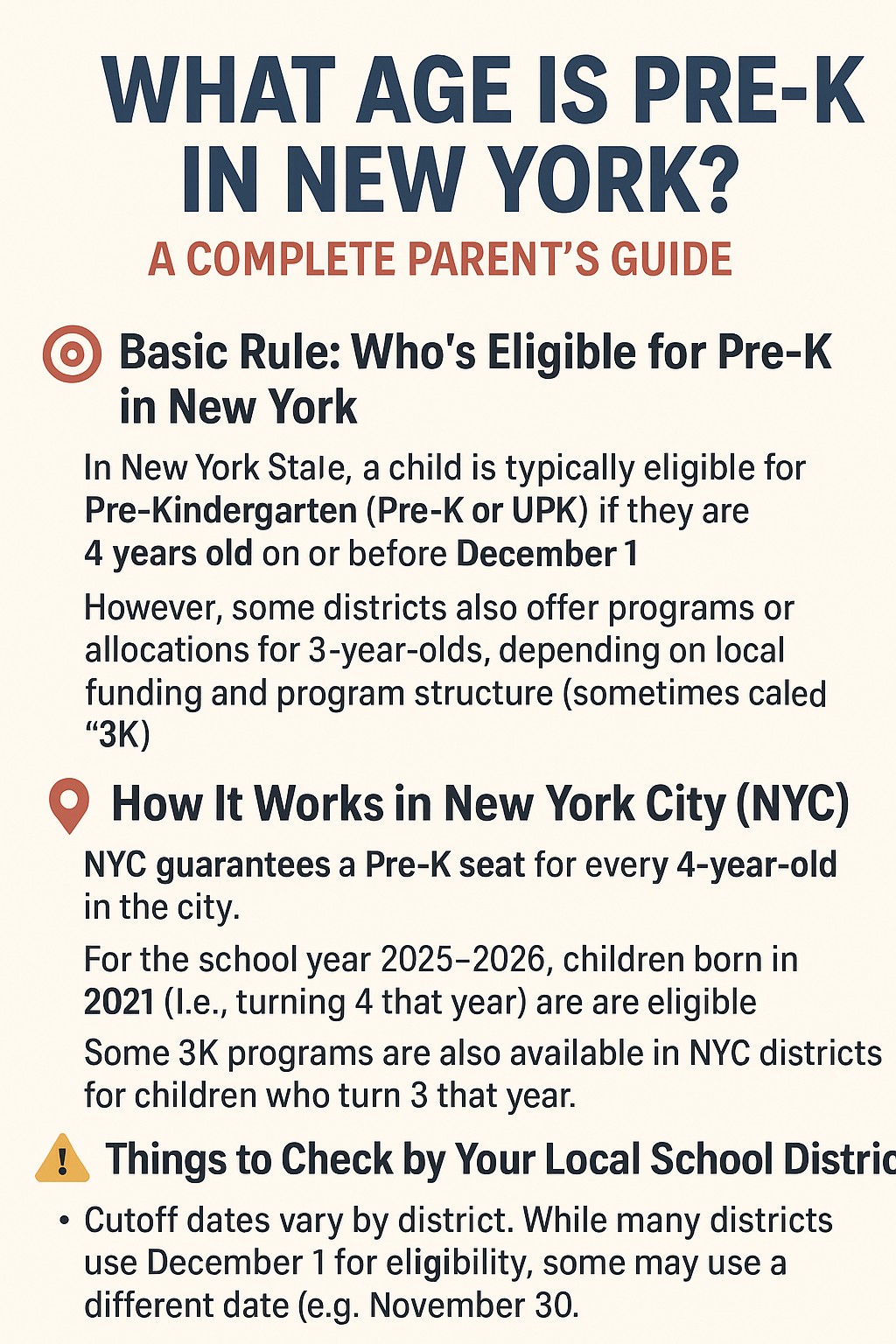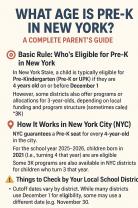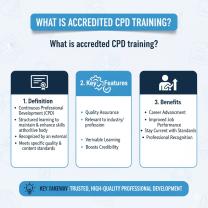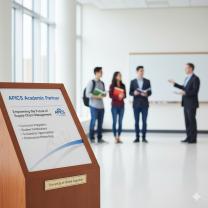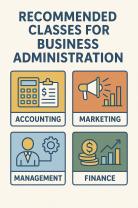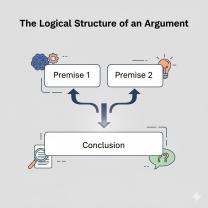What age is pre K in New York?
I. Executive Summary: The Foundation of Early Learning in New York
The State of New York has established one of the nation’s most comprehensive frameworks for publicly funded early education, commonly known as Universal Prekindergarten (UPK). This initiative is designed to provide free, high-quality instruction to four-year-old children across the state. While UPK is a statewide policy, its implementation and accessibility vary significantly, with New York City (NYC) serving as the predominant model for universal full-day access.
1.1 Defining Pre-K: A Free, High-Quality Educational Right
Pre-K in New York is explicitly defined as a state-funded program guaranteeing high-quality early educational experiences. Unlike compulsory K-12 schooling, UPK is an offering available at no cost to eligible families, designed to prepare children for kindergarten. The program's operational structure hinges on robust collaboration: school districts receiving UPK funds are mandated to partner with Community-Based Organizations (CBOs) to ensure maximum reach and quality, allocating a percentage of their grant awards specifically for these collaborations.
1.2 Key Age and Timeline Snapshot
The primary eligibility criterion for Pre-K enrollment centers on the child’s age, targeting children who turn four years old during the calendar year of entry.
II. The Critical Question: What Age Is Considered Pre-K in New York?
This section establishes the definitive age requirements for enrollment in New York’s UPK system, particularly in the dense operational environment of New York City, and contrasts this with the related 3-K offering.
2.1 Pre-K Eligibility Age in New York City (NYC DOE Standard)
In New York City, a child is eligible for Pre-K if they turn four years old within the calendar year corresponding to the school year’s fall intake. For instance, children who were born in 2021 and reside in New York City are eligible to apply for Pre-K admission in the fall of 2025.
The vast majority of Pre-K options in NYC operate on a full-day schedule, typically running for 6 hours and 20 minutes, five days per week, spanning September through June. This schedule aligns closely with standard K-12 operational hours, facilitating logistical ease for working families. However, some 5-hour or half-day options (2 hours and 20 minutes) may still be available, often associated with specific NYC Early Education Centers (NYCEECs), which are Community-Based Organizations (CBOs).
2.2 Differentiating Pre-K from 3-K (Three-Year-Old Programs)
New York City has taken a pioneering step by expanding early childhood education further to include three-year-olds through its 3-K for All program. This program is available to children who turn three years old in the calendar year of entry.
2.3 State-wide Context: Pre-K Eligibility Outside of NYC
The fundamental age eligibility rule—that children turning four are the target population—is consistently applied across all New York State school districts participating in the Universal Prekindergarten (UPK) program. However, the availability of seats and the duration of the instructional day vary drastically once beyond the New York City limits.
The data reveals a significant disparity in service delivery across the state. New York City has achieved near-universal access, with 99 percent of UPK seats providing full-day instruction, mirroring K-12 hours. This accessibility resulted partly from the city’s deliberate campaign to attract families across all demographic groups, positioning the system as a model for high-quality, universal access.
In contrast, districts outside the city face substantial gaps in providing universal coverage. As of the 2023 school year, districts outside New York City enrolled only 59 percent of eligible four-year-olds in UPK, despite increased state funding aimed at expanding services. Furthermore, only 77 percent of enrolled pupils outside NYC received full-day instruction, though this figure represents an improvement from 51 percent three years prior.
| Table 1: NY State Early Childhood Program Eligibility by Age |
| Program Level |
| Pre-K (UPK) |
| 3-K (NYC Only) |
| Kindergarten (K) |
| Compulsory Attendance |
III. Understanding New York’s Universal Pre-K (UPK) System
The strength of New York’s early childhood initiative lies in its mandated quality standards and its collaborative delivery model, which leverages public and private expertise to serve diverse communities.
3.1 The UPK Promise: Coverage and Quality Across the State
The state’s approach to UPK relies on school districts collaborating with specialized early childhood providers. State law mandates that school districts receiving UPK grant funds must set aside a minimum of 10 percent of the total award to partner with high-quality eligible agencies and Community-Based Organizations (CBOs).
Despite this collaborative mandate, access remains uneven. While large city districts like Yonkers and Rochester also provide universal seats, and Buffalo and Syracuse cover over 70 percent of four-year-olds, the level of full-day instruction and total coverage drops substantially in smaller, non-urban districts.
3.2 Program Structure and Setting: Where Children Learn (NYC Focus)
The New York City system’s success in achieving comprehensive access is rooted in its diverse portfolio of program sites, offering options that cater to different family needs and geographical locations. The primary categories of sites include:
District Schools: Public elementary schools that integrate Pre-K classrooms into their existing K-12 structures. These often afford zoned priority to local residents.
Pre-K Centers: Dedicated facilities run exclusively by New York City Public Schools (NYCPS) staff, offering only grades preceding kindergarten.
NYC Early Education Centers (NYCEECs): These are the Community-Based Organizations (CBOs). These centers are privately run but publicly funded to provide UPK seats. They are crucial for capacity and often provide specialized early childhood expertise.
Family Child Care (Home-Based Programs): While more common for 3-K enrollment, these programs offer small, home-like environments for early learners.
3.3 Quality Assurance: Curriculum and Instructional Requirements
New York State Education Law imposes stringent requirements on UPK programs to ensure instructional quality and consistency, regardless of the program provider (DOE school or CBO). According to 8 NYCRR 151-1.3, every school district operating a prekindergarten program must adopt curricula aligned with State learning standards, guaranteeing continuity with instruction provided in kindergarten through grade 12.
A core focus of this quality mandate is evidence-based early literacy and emergent reading instruction. The essential components required in every UPK curriculum include five specific areas: development of background knowledge, phonological awareness, expressive and receptive language skills, vocabulary development, and phonemic awareness.
Furthermore, the instructional methodology must be learner-centered. This means activities must be designed to promote the child's total growth and development, utilizing a balanced schedule of teacher-initiated and child-initiated learning activities to encourage independence and self-assurance. Classrooms are required to arrange materials in learning centers, promoting small-group and individual activities, and teachers must employ intentional planning to focus instruction that meets the differentiated learning styles of all students.
IV. Enrollment Requirements: Documents and Health Mandates
After receiving an offer to a UPK program, parents must successfully complete the formal pre-registration process, which involves fulfilling strict residency and health compliance mandates established by the state and city.
4.1 Establishing Residency: Required Proof for NYC Enrollment
To register for any NYC public school program, including Pre-K, the parent or guardian must establish that the child is a New York City resident.
Residency documentation must be official and current. Acceptable proofs often include: the original lease agreement, deed, or mortgage statement for the residence; a current property tax bill; a utility bill (such as National Grid or Con Edison) or a cable television bill, dated within the past 60 days; a water bill dated within the past 90 days; official payroll documentation from an employer dated within the past 60 days; or a document from a federal, state, or local government agency (e.g., IRS, NYCHA, ACS) indicating the resident's name and address, dated within the past 60 days.
4.2 Mandatory Health and Immunization Compliance
New York State law enforces rigorous immunization requirements for all children attending day care, Pre-K, and school. Parents must show proof of their child's up-to-date vaccinations, or provide a valid medical exemption, within 14 days of the child’s first day of school or day care attendance.
The immunization schedule for the Pre-K age cohort includes all standard childhood vaccines—DTaP/Tdap, Hepatitis B, MMR, Polio, and Varicella—but also mandates two additional vaccines specifically targeting diseases prevalent in young children: Haemophilus influenzae type b conjugate vaccine (HiB) and Pneumococcal Conjugate vaccine (PCV).
| Table 2: Required Immunizations for Pre-K/Day Care in New York State |
| Vaccine Type |
| DTaP/Tdap |
| MMR |
| Polio |
| Varicella |
| Hepatitis B |
| Haemophilus influenzae type b (HiB) |
| Pneumococcal Conjugate (PCV) |
4.3 Eligibility for Special Populations: Equity and Protection
The NYC enrollment system is designed to provide comprehensive access to all eligible four-year-olds, explicitly including children with varied needs. Children with disabilities, those who have an Individualized Education Program (IEP)—including recommendations for Special Education Itinerant Teacher (SEIT) services—are welcome in all 3-K and Pre-K programs.
For children experiencing homelessness or residing in temporary housing, the McKinney-Vento Act provides essential legal protections regarding educational access and stability.
V. The Foundational Benefits of Attending Pre-K in New York
Attending high-quality Pre-K offers benefits that extend beyond basic academic preparation, impacting a child’s health trajectory, social-emotional growth, and future educational equity.
5.1 Academic and Cognitive Readiness
The rigorous curriculum standards mandated by New York State law, particularly the focus on evidence-based emergent reading instruction (including phonological awareness, vocabulary, and phonemic awareness), are intentionally designed to ensure cognitive readiness.
5.2 Accelerated Health Screening and Intervention
One of the most immediate, yet often overlooked, advantages of universal Pre-K enrollment is its function as a widespread public health and early intervention mechanism. Studies have demonstrated that enrollment in UPK significantly increases the likelihood that a child will be diagnosed with and receive treatment for chronic conditions such as asthma, or sensory issues like vision or hearing problems, during the Pre-K year itself.
This accelerated identification process is highly beneficial. By addressing these health barriers during the Pre-K year, rather than deferring diagnosis until kindergarten, the program proactively removes potential obstacles that could otherwise delay learning or cause behavioral problems in later grades.
5.3 Social-Emotional Development and Exposure to Diversity
The success of New York City’s model in achieving high enrollment across all neighborhoods means that children are placed in environments that reflect genuine socioeconomic and racial diversity.
Research confirms that the advantages of diverse learning environments begin before kindergarten. Studies using state pre-K data, including New York’s, show that children in classrooms with higher average socioeconomic status demonstrated greater learning outcomes, regardless of the child's individual background.
VI. How to Apply for a Pre-K Program in New York City: A Logistical Walkthrough
The application process in New York City is centralized through an online portal and involves understanding a specific hierarchy of admissions priorities used to manage placement lotteries.
6.1 The Application Window and MySchools Portal
The application process for 3-K and Pre-K is managed almost exclusively through the MySchools platform. This online portal is mandatory for NYC families seeking to apply to public schools and allows them to explore program options, view personalized school directories, and manage the entire admissions process, from submission to offer acceptance.
The admissions timeline follows a predictable pattern, crucial for planning. The application period typically opens early in the calendar year (e.g., January or February) and closes several weeks later. Offers are subsequently released in the spring (e.g., May).
6.2 Understanding Admissions Priorities and the Lottery System
Placement in NYC Pre-K is determined by a lottery system that adheres to a strict set of admissions priorities. These priorities are applied sequentially until all available seats are filled, meaning that a strategic understanding of these rules is essential for maximizing placement chances. Priorities differ slightly depending on the program type (District School, Pre-K Center, or NYCEEC).
For District Schools with designated zones, the highest priority is typically given to residents living within that specific zone.
Parents must carefully leverage these priorities when ranking their choices. For instance, prioritizing a zoned District School or an NYCEEC where the family already utilizes services significantly improves the chances of admission compared to listing a non-zoned program in a distant district, where placement relies entirely on the general district lottery.
| Table 3: NYC Pre-K Admissions Priority Hierarchy (Top Tier) |
| Priority Level |
| Tier 1: Current Student |
| Tier 2: Zoned Priority |
| Tier 2: Sibling Priority |
| Tier 3: Social Services |
| Tier 4: District Priority |
6.3 Managing Offers, Waitlists, and Pre-Registration
Once offers are released, typically in the spring, families must adhere strictly to deadlines. A fundamental procedural rule is that parents must accept their child’s initial offer and pre-register by the stated deadline to secure the seat.
Crucially, accepting the initial offer does not compromise the child’s standing on waitlists for programs ranked higher on their application.
To finalize enrollment (pre-registering), parents must work with the school or center to submit required documentation, including the child's birth certificate, current immunization records, and proof of residence.
VII. Appendix: Key Contacts and Resources
The complexity of the New York City enrollment process necessitates reliable access to centralized resources and support.
Application and School Exploration Portal:The MySchools portal
Enrollment Support:For families needing assistance with the application process, managing waitlists, or finding available seats outside the main application window, the NYC DOE Enrollment Office is the primary contact.
NYC DOE Enrollment Phone: 718-935-2009
NYC DOE Enrollment Email: [email protected]
Conclusion
New York’s commitment to early education provides a significant, free advantage for its four-year-old residents. While the fundamental age eligibility of turning four within the calendar year is consistent statewide, parents outside of NYC must temper expectations regarding universal full-day seat availability due to existing service gaps. For NYC families, success in navigating the system relies on a rigorous understanding of the application timeline, adherence to stringent health and residency requirements, and, most importantly, strategic ranking of program choices based on defined admissions priorities (such as zoning or sibling status). By engaging proactively with the MySchools portal and preparing documentation in advance, families ensure their children benefit fully from this crucial educational foundation.
